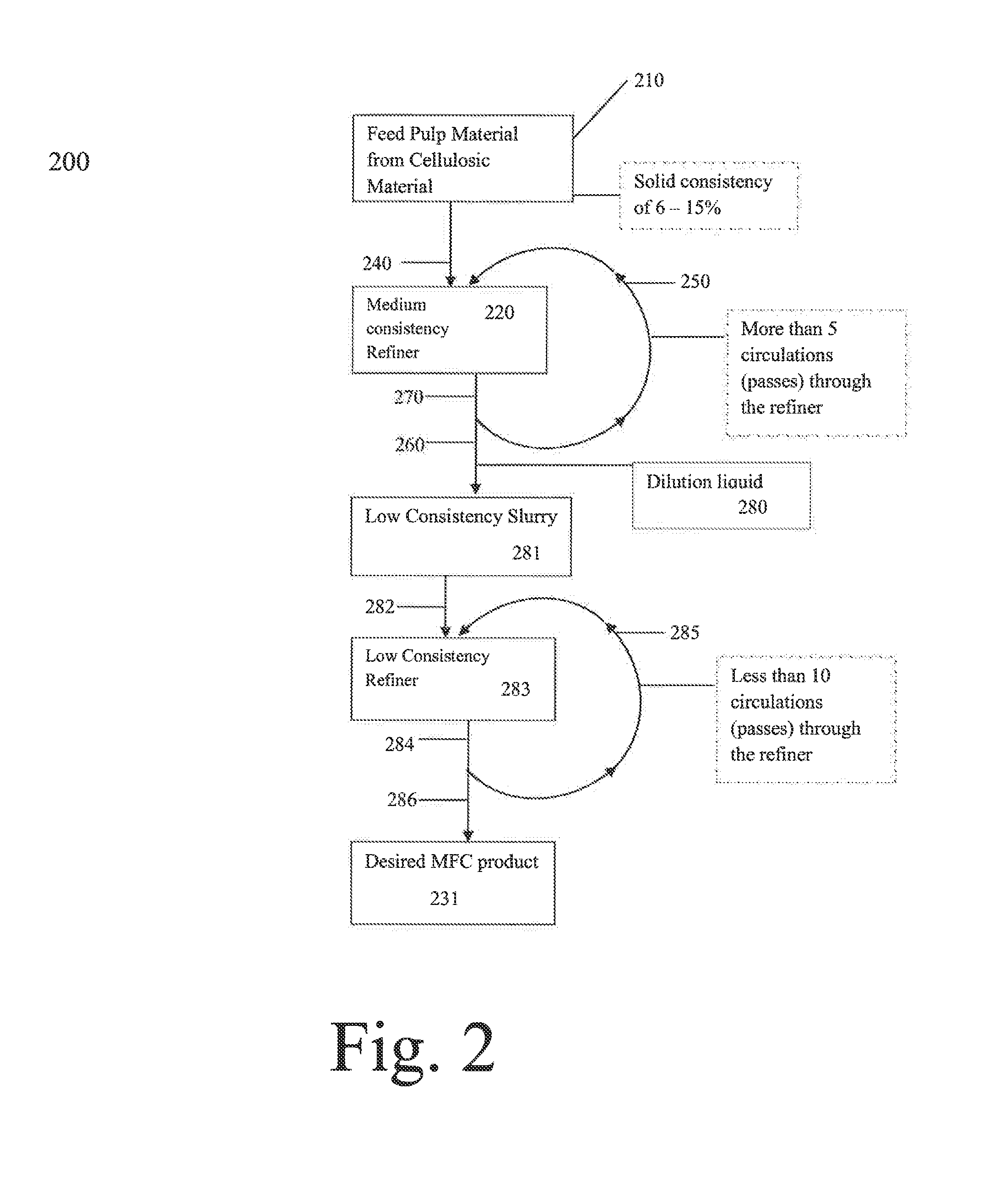Method for production of micro fibrillated cellulose
a technology of micro fibrillation and cellulosic material, which is applied in the direction of manufacturing tools, microorganism/enzyme addition, cellulose treatment using microorganisms/enzymes, etc., can solve the problems of high pretreatment cost, high labor intensity, and high labor intensity, and achieve the effect of reducing the specific energy consumption (sec)
- Summary
- Abstract
- Description
- Claims
- Application Information
AI Technical Summary
Benefits of technology
Problems solved by technology
Method used
Image
Examples
Embodiment Construction
[0032]FIG. 1 shows a process for producing MFC 100. The medium consistency feed pulp material 110 may be cellulosic material which has been previously treated to produce pulp. Medium consistency feed pulp material 110 may have a solids consistency of 6% to 15%. The medium consistency feed pulp material 110 may be fed to a medium consistency refiner 120 where the pulp may be separated into small bundles or individual fibers. Medium consistency refiner 120 can be a single or double disc refiner with at least one rotating disc, conical refiner, rotating cylinder refiner, or other refiner capable of handling a mixture of solid (pulp) and liquid slurry with a solids consistency of between 6% and 15%, (a medium consistency refiner). The medium consistency feed pulp material 110 may be fed via line 140 to the inlet of the medium consistency refiner 120 and may move through the medium consistency refiner 120 to the outlet where it can be removed through line 170 and either returned to the m...
PUM
| Property | Measurement | Unit |
|---|---|---|
| width | aaaaa | aaaaa |
| pressure drop | aaaaa | aaaaa |
| length | aaaaa | aaaaa |
Abstract
Description
Claims
Application Information
 Login to View More
Login to View More - R&D
- Intellectual Property
- Life Sciences
- Materials
- Tech Scout
- Unparalleled Data Quality
- Higher Quality Content
- 60% Fewer Hallucinations
Browse by: Latest US Patents, China's latest patents, Technical Efficacy Thesaurus, Application Domain, Technology Topic, Popular Technical Reports.
© 2025 PatSnap. All rights reserved.Legal|Privacy policy|Modern Slavery Act Transparency Statement|Sitemap|About US| Contact US: help@patsnap.com



